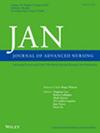利用再情境化理论来理解基于模拟的护士教育中跨多个地点的学习
IF 3.4
3区 医学
Q1 NURSING
引用次数: 0
摘要
本文旨在探讨在护士教育中引入基于模拟的教育(SBE)时,再情境化理论是否加深了我们对跨多个地点学习的理解。要求学生在临床实习中学习仍然是一种愿望,也是国际上的监管要求。然而,全球医疗保健日益复杂和医疗保健劳动力空缺数量的增加导致了恶劣的学习环境。在互联网速度加快、虚拟技术快速发展、硬件价格可承受以及COVID - 19大流行后转向在线教育的背景下,SBE已成为全球卫生专业准备课程的一种关键教学方法。DesignCritical讨论文件。方法本文以当前关于SBE和再语境化理论的文献为基础。研究结果:SBE的评价往往对护士教育的学习有积极的影响。已经确定了关于SBE的证据的弱点和差距,例如缺乏对照组或纵向研究。利用再情境化理论,我们认为SBE也可能增加学生在多个学习地点的理论-实践分裂。结论SBE的引入为临床实践提供了补充的积极学习机会,同时也创造了多个并不总是一致的学习场所。需要做更多的工作来从一个依赖于学生被激励并能够在多个学习地点学习的课程中进行教学。对专业和病人护理的影响为了支持大学本科专业准备课程的学生护士,这些课程依赖于SBE以及临床实践和大学,护士教育者和临床护士之间需要合作制定共同的价值观。这可以通过重构学生和护士如何跨学习地点学习和重新利用知识来实现。本文章由计算机程序翻译,如有差异,请以英文原文为准。
Using Recontextualisation Theory to Understand Learning Across Multiple Sites in Simulation‐Based Nurse Education
AimThe aim of this discussion paper is to explore whether recontextualisation theory deepens our understanding of learning across multiple sites when introducing simulation‐based education (SBE) into nurse education.BackgroundThe requirement for students to learn in clinical placements remains an aspiration as well as a regulatory requirement internationally. Yet, the increasing complexity of healthcare and the numbers of vacancies in the healthcare workforce globally have led to poor learning environments. In the context of faster internet speeds, rapid development in virtual technologies, affordability of hardware, and the move to online educational provision after the COVID‐19 pandemic, SBE has emerged as a key teaching method in health professional preparation programmes globally.DesignCritical discussion paper.MethodsThis discussion paper is based on current literature on SBE and recontextualisation theory.FindingsEvaluations of SBE often show positive outcomes for learning in nurse education. Weaknesses and gaps in the evidence on SBE, such as the scarcity of control groups or longitudinal studies, have been identified. Using recontextualization theory, we argue that SBE may also increase the theory‐practice split for students across multiple sites of learning.ConclusionsThe introduction of SBE offers supplementary positive learning opportunities to those in clinical practice while at the same time creating multiple sites of learning which are not always aligned. More needs to be done to teach from a curriculum which relies on students being motivated and able to learn across multiple sites of learning.Implications for the Profession and Patient CareTo support student nurses in UG professional preparation programmes which rely on SBE as well as clinical practice and universities, shared values between nurse educators and clinical nurses need to be enacted collaboratively. This could be achieved by reframing how students and nurses learn and rework knowledge across sites of learning.
求助全文
通过发布文献求助,成功后即可免费获取论文全文。
去求助
来源期刊
CiteScore
6.40
自引率
7.90%
发文量
369
审稿时长
3 months
期刊介绍:
The Journal of Advanced Nursing (JAN) contributes to the advancement of evidence-based nursing, midwifery and healthcare by disseminating high quality research and scholarship of contemporary relevance and with potential to advance knowledge for practice, education, management or policy.
All JAN papers are required to have a sound scientific, evidential, theoretical or philosophical base and to be critical, questioning and scholarly in approach. As an international journal, JAN promotes diversity of research and scholarship in terms of culture, paradigm and healthcare context. For JAN’s worldwide readership, authors are expected to make clear the wider international relevance of their work and to demonstrate sensitivity to cultural considerations and differences.

 求助内容:
求助内容: 应助结果提醒方式:
应助结果提醒方式:


